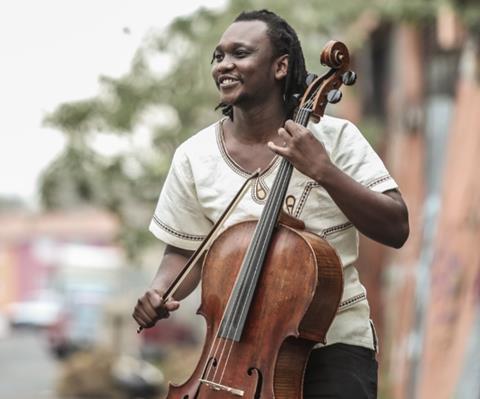South African cellist Abel Selaocoe provides advice on livestreaming or recording performances for online audiences during the time of Covid-19

1. See this is an opportunity to be as intimate as possible with your audience
Some of music making’s really magical moments take place in the practice room or in solitude. In an empty hall it is important not to try to replicate a live audience-filled experience, but instead to see this as a chance to break the fourth wall either in audio or video and to speak to your audience about your space and how you plan to make music for them.
2. Take advantage of technology - if you have access to it
Your audience has the chance to take in many different perspectives from the angles you provide for them on video, instantly allowing them to learn more about the physicality of your instrument and informing them about what to listen out for. I have had to learn a lot about recording myself in the past few months; it really has opened my eyes as to how we can tastefully enhance the sounds we create. My advice is to create a natural-sounding acoustic in rooms that are usually tough to play in. You only need four things to do this: audio interface, a laptop, DAW software (REAPER or Ableton etc) and a microphone
3. Shine your own corner
By this I mean play for yourself. Finding personal joy in the music soon becomes infectious for your audience. At times it may be to your advantage to feel unobserved.
Read: How to record chamber music in lockdown
Read: How to put on a live concert in the time of Covid-19
4. Be inspired by your space
All buildings have memories, so use your imagination to remember the types of energy the venue has inspired, and maybe use the appearance of the space as a guide to shape your repertoire or simply just to inform your music-making. Help your audience by describing what you see, giving them context of where you may be drawing inspiration from.
5. Ask yourself why you are doing it
I often find that this helps to distil the message of the performance as a whole, and seeps into how you speak, perform and carry yourself.
6. Go with the flow
It’s important to simply follow your instincts. For instance, when you speak, you can judge whether you need to be concise and clear for the audience or elaborate further according to what you have just performed. Lastly, look for beautiful ways to transition into the next piece without speaking, as sometimes this will speak to your audience more than you can.
Abel Selaocoe gives a livestreamed performance from All Saints Church Helmsley of Baroque and South African solo cello music on 23 July at 6pm BST as part of the 2020 online Ryedale Festival.
Taking place from 19 to 26 July, the Ryedale Festival is livestreaming eight free-to-view concerts from North Yorkshire settings by performers including violinists Tamsin Waley-Cohen and Rachel Podger, and pianist Isata Kanneh-Mason.


































No comments yet